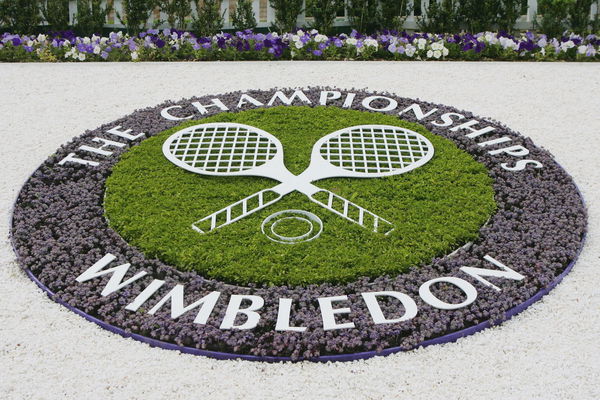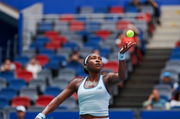
Getty
WIMBLEDON, UNITED. JUNE 2018 – Aerial Photograph of the No.1 Court at the All England Lawn Tennis Club, Wimbledon on June 27th, 2018. Aerial Photograph by David Goddard/Getty Images

Getty
WIMBLEDON, UNITED. JUNE 2018 – Aerial Photograph of the No.1 Court at the All England Lawn Tennis Club, Wimbledon on June 27th, 2018. Aerial Photograph by David Goddard/Getty Images
1973 was a historic year in the Tennis world. When the ILTF banned Nikola Pilic, then Yugoslavian’s #1, the tennis world came together in unprecedented support.
Watch What’s Trending Now!
This controversial decision sparked a powerful display of player unity -? 81 top-ranked players boycotted the Wimbledon in a bold statement against the injustice. The legacy of this walkout continues to shape the sport today.
ADVERTISEMENT
The Defiant Stand
In May of 1973, Yugoslavia’s number one tennis player, Nikola Pilic, found himself at the center of a contentious controversy. The Yugoslav Tennis Association suspended Pilic, accusing him of refusing to participating in a Davis Cup tie against New Zealand.

Getty
Photo by Julian Finney/Getty Images
Initially, the International Lawn Tennis Federation and Yugoslav Tennis Association, laid down that Pilic would be suspended for 9 months. This meant that Pilic could not participate in the prestigious Wimbledon Championships.
ADVERTISEMENT
Responding swiftly to this perceived injustice, the then newly formed ATP (Association of Tennis Professionals) rallied behind Pilic. The ATP boldly declared that no player should partake in Wimbledon, if the ILTF’s decision still stood.
Top Stories
26-Year-Old Tennis Journalist Meets Tragic Demise After Battling Brutal Chronic Disease

ESPN Ditches Coco Gauff, Jannik Sinner’s Coaches for Chris Evert After 2 Decades

Coco Gauff Surprises Stefanos Tsitsipas’ Brother After He Calls Her Out at United Cup

17-Year-Old Aussie Shocks 4x WTA Title Winner at Brisbane International

Stefanos Tsitsipas Stuns Injured Taylor Fritz to End Almost Two Year Drought

This call for solidarity resonated deeply with the sport’s elite. 81 top-ranked players, including the reigning champion Stan Smith, chose to stage a powerful boycott. This resulted in the withdrawal of 12 of the 16 men’s seeds. With this unwavering show of unity, the ATP sent an unequivocal message against perceived unfairness.
ADVERTISEMENT
Few players like Nastase, Roger Taylor, and Ray Keldie, defied the consensus and incurred fines from ATP’s disciplinary committee. Nastase, in particular, had been obligated by the Romanian government and army to compete. Despite his support for the ATP boycott, the Romanian was forced to participate.
This led to speculations that Nastase intentionally lost his fourth round match to indirectly back the boycott, but no substantiative evidence exists to back these claims.
ADVERTISEMENT
The aftermath and resilience amidst controversy
The aftermath of the Wimbledon Walkout in ’73 reverberated throughout the tennis world. Beyond the immediate boycott and the suspension of the Yugoslav, this incident triggered a series of reforms that revolutionized Tennis.
The boycott shed light on the flaws within the governing bodies of tennis, exposing the need for players to have a greater voice in the decision making process. It ignited serious conversations about player rights, fair treatment and the overall structure of the sport.
ADVERTISEMENT
Without a doubt, this incident served as a wake-up call, pushing the sport to embrace more player-centric approaches.
Following the walkout, the ILTF implemented a range of reforms to address the grievances. These reforms established better communication channels between players and governing bodies, provides avenues for player representation and ensure fair treatment in disciplinary matters.

Getty
A general view inside the Wimbledon Number 1 court with the new fixed and retractable roof at the All England Lawn Tennis and Croquet Club on April 30, 2019 in London, England. (Photo by Clive Brunskill/Getty Images)
This was the first step in creating an equitable and inclusive tennis landscape.
ADVERTISEMENT
The legacy of unity displayed during the Pilic ban endures as a defining moment in tennis history. It highlighted the power of collective action and emphasized the importance of standing up for what is right. The incident served as a catalyst for change, prompting players and governing bodies to work together in shaping a more player-centric and progressive sport.
Furthermore, the resilience of Nikola Pilic himself became an inspiration to aspiring athletes. Inspite of this huge upheaval, Pilic continued to make generous contributions to tennis as a coach, leading players to success at both individual and team levels. His unwavering spirit serves as a reminder of the power of perseverance in the face of adversity.
ADVERTISEMENT
As tennis evolves, the lessons learned from this historic event continue to guide players and governing bodies toward a more inclusive, transparent, and athlete-driven future.
Watch This Story – ‘Don’t Mind Getting a Bit Dirty’ – Aussie Star Nick Kyrgios Explores the ‘Roger Federer’ Connection and His Nasty Desire to Win
ADVERTISEMENT
ADVERTISEMENT
ADVERTISEMENT

